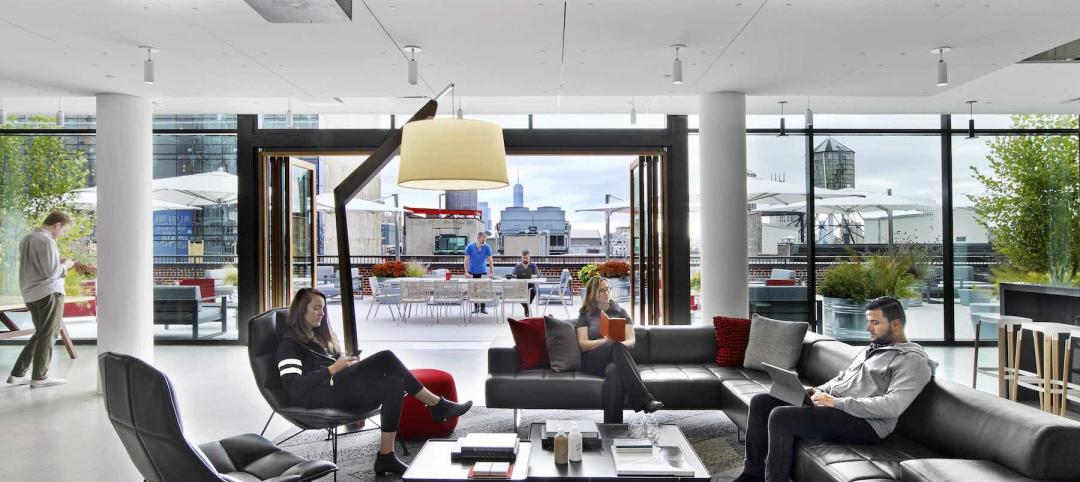Nelson, the acquisition-minded design, engineering, and space-management firm, is expanding its reach in the western United States by acquiring EHS Design, a Seattle-based architecture and interior design outfit with 21 associates and net fee billings this year of $3.5 million. The merger becomes effective on January 1.
This represents Nelson’s fifth merger or acquisition in 2014, during which the firm’s net fee revenue has increased by 60% to $65 million. Over the past 14 years, Nelson has merged with or acquired nearly 30 companies, and it currently has 35 locations and nearly 500 teammates around the world.
The EHS Design deal is a continuation of Nelson’s strategy to expand into new geographies, said John “Ozzie” Nelson, Jr., the company’s CEO. Nelson had a presence in the Seattle market, but will now have an office location there, whose day-to-day operations will be managed by Mindy Howard, one of EHS’s founders. Mia Marshall, a managing principal with EHS since July 2003, was named managing principal of the Seattle office, which will oversee the combined companies’ operations and business.
Jack Emick, one of EHS’s founders and its director of operations, will now focus on building and maintaining client relationships. As a result of the sale, “we will be able to reach existing and new clients on a national and international level, while offering an expanded array of services,” said Emick.
The terms of Nelson’s acquisition of EHS were not disclosed. EHS Design will operate as a division of Nelson. Both companies were founded in 1977. This is the second merger in EHS’s history; in 1992, it joined forces with Paul Seibert & Associates, a financial facilities design firm. Seibert, an EHS principal, will continue working with financial institutions and expand his responsibilities into retail environments in the U.S.
Related Stories
| Aug 11, 2022
Report examines supposed conflict between good design and effective cost management
A report by the American Institute of Architects and the Associated General Contractors of America takes a look at the supposed conflict between good design and effective cost management, and why it causes friction between architects and contractors.
Architects | Aug 11, 2022
Mancini Duffy Bill Mandara on expanding through diversification
In this segment for HorizonTV, BD+C's John Caulfield interviews Mancini Duffy's CEO and Co-owner William Mandara about his firm's recent growth, which includes an acquisition and new HQs office.
Energy Efficiency | Aug 11, 2022
Commercial Energy Efficiency: Finally “In-the-Money!”
By now, many business leaders are out in front of policymakers on prioritizing the energy transition.
High-rise Construction | Aug 11, 2022
Saudi Arabia unveils plans for a one-building city stretching over 100 miles long
Saudi Arabia recently announced plans for an ambitious urban project called The Line—a one-building city in the desert that will stretch 170 kilometers (106 miles) long and only 200 meters (656 feet) wide.
| Aug 10, 2022
U.S. needs more than four million new apartments by 2035
Roughly 4.3 million new apartments will be necessary by 2035 to meet rising demand, according to research from the National Multifamily Housing Council (NMHC) and National Apartment Association.
| Aug 10, 2022
Gresham Smith Founder, Batey M. Gresham Jr., passes at Age 88
It is with deep sadness that Gresham Smith announces the passing of Batey M. Gresham Jr., AIA—one of the firm’s founders.
| Aug 9, 2022
Work-from-home trend could result in $500 billion of lost value in office real estate
Researchers find major changes in lease revenues, office occupancy, lease renewal rates.
| Aug 9, 2022
5 Lean principles of design-build
Simply put, lean is the practice of creating more value with fewer resources.
| Aug 9, 2022
Designing healthy learning environments
Studies confirm healthy environments can improve learning outcomes and student success.
Legislation | Aug 8, 2022
Inflation Reduction Act includes over $5 billion for low carbon procurement
The Inflation Reduction Act of 2022, recently passed by the U.S. Senate, sets aside over $5 billion for low carbon procurement in the built environment.

















